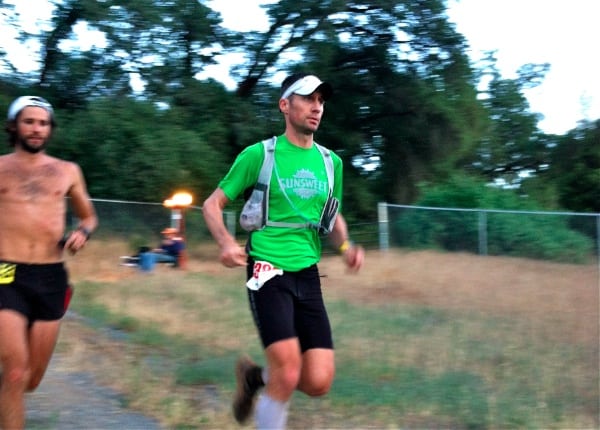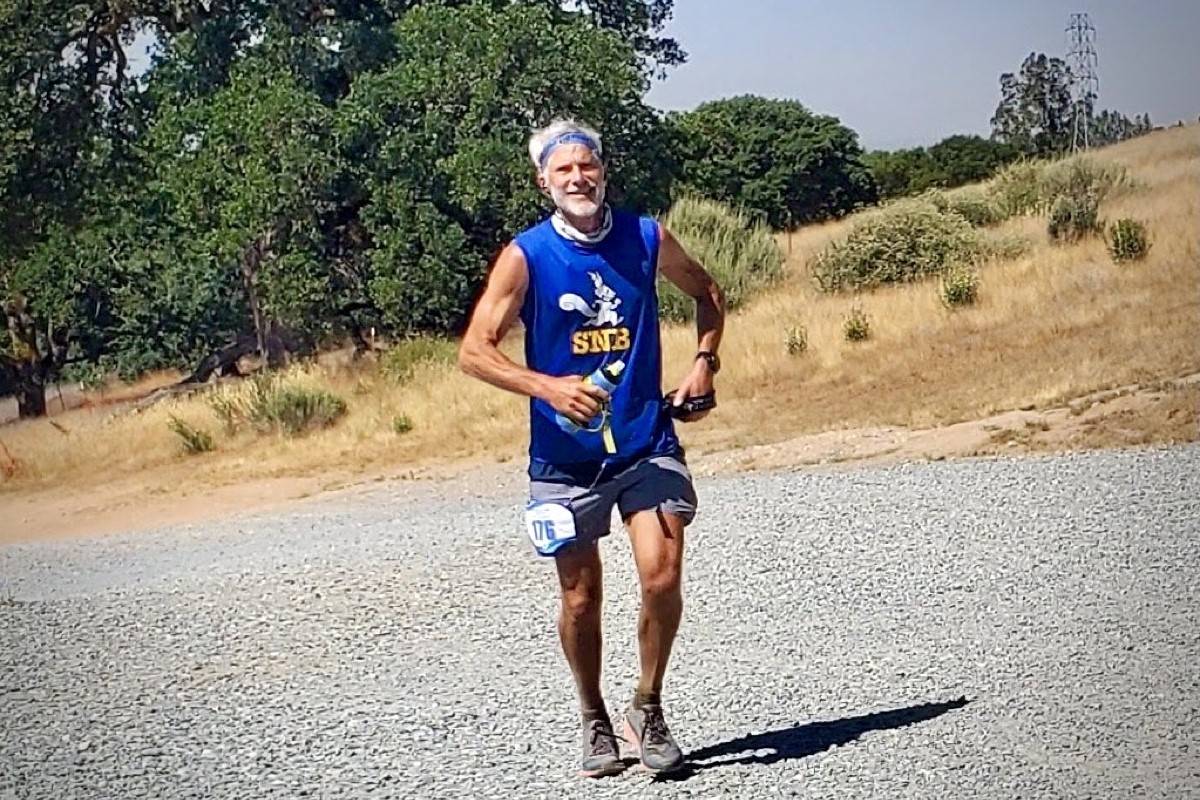 Last month I attempted the 2022 Run Rabbit Run 100 Mile in Steamboat Springs, Colorado, which was my first 100 miler in nearly five years. In fact, it was my first run over 50 miles in just as long. Years of pain and dysfunction have precluded most any trail running, let alone racing. But when my pain rapidly improved this summer, I decided to give the run a last-minute go. I prepared the best I could over about 10 weeks from early July to race day, September 16.
Last month I attempted the 2022 Run Rabbit Run 100 Mile in Steamboat Springs, Colorado, which was my first 100 miler in nearly five years. In fact, it was my first run over 50 miles in just as long. Years of pain and dysfunction have precluded most any trail running, let alone racing. But when my pain rapidly improved this summer, I decided to give the run a last-minute go. I prepared the best I could over about 10 weeks from early July to race day, September 16.
I didn’t finish. Significant gut dysfunction combined with not enough gear for inclement weather conditions — including freezing temperatures and repeated downpours of rain — made it impossible to move fast enough to avoid hypothermia. I quit at mile 80, during the worst of the rain and the cold.
Thankfully not all did-not-finishes are lost causes. I learned a lot of lessons. It is said we only learn from failure; we seldom learn from success. Looking back on my ultrarunning career, I believe that.
I walk away from that DNF with five key lessons that took a long hiatus — and a stripping away of longstanding and taken-for-granted fitness — to learn.
A Fast Road Runner’s History
I came into trail ultrarunning in 2010, on the heels of peak fitness. In the months preceding my first ultra, a flat 50-mile loop course on the outskirts of Portland, Oregon, I had run my two fastest marathons, both in the low 2:30s. I had also completed a 400-mile bike tour of Yellowstone National Park and the Beartooth Mountains of northern Wyoming. I was fit.
When I showed up to that first race, I just ran easy. And I kept running — pretty fast — until I was finished. I hardly stopped. I fueled and hydrated minimally. It was a huge success.
So, I kept running more: a 50k, another 50 miler, and then my first 100 miler at the Western States 100. I learned a lot, of course. But I was also riding the wave of a level of fitness that I had built over a decade of consistent hard and fast training. In some respects, a medium-hard five-hour run is a lot easier than two-and-a-half hours at a 5:50-minute-mile pace.
My point is that things come easy when you have a strength and fitness momentum. Fast forward 12 years, and I had lost nearly all that fitness. This summer, barely free from a multi-year struggle with nerve pain in both my ankles, I felt like I was on a crash-course rebuild, with so much to regain in so little time.
Some things were regained. Some were not. Here are those key training and preparation elements I felt were missing for me, and for the bulk of the midpackers around me at the Run Rabbit Run 100 Mile:
- Find and hone your sustainable racing pace.
- Train for time on feet.
- Be able to run 20 miles or more nonstop.
- Prepare with enough gear for every weather situation.
- Practice not quitting.
Lesson 1: Find and Hone Your Sustainable Racing Pace
The Run Rabbit Run 100 Mile begins with a merciless 4,000-foot, five-mile climb up the Steamboat ski hill. At times the grades exceed 25%. Even though I had entered in the non-elite, “tortoise” field, I found myself well back from the leaders, despite the fact that my goal was to finish in the low 20-hour range, a time that would win this division.
I had prepared by running these paces over several sections of the course, and triangulated those paces with a sustainable maximum heart rate — which, for me on that day, was 150 beats per minute. I knew that effort was sustainable. The only question was if my legs could sustain that overall effort and pace over the full 100-plus miles.
Early on I ran and chatted beside runners who were clearly working very hard, breathing heavily and drenched in sweat. Yet when we would talk about goals for the day, many of them noted they were shooting for 26 or 28 hours!
After I began to slow down, I still would see only one or two people from those first 10 to 15 miles in the latter stages of the race.
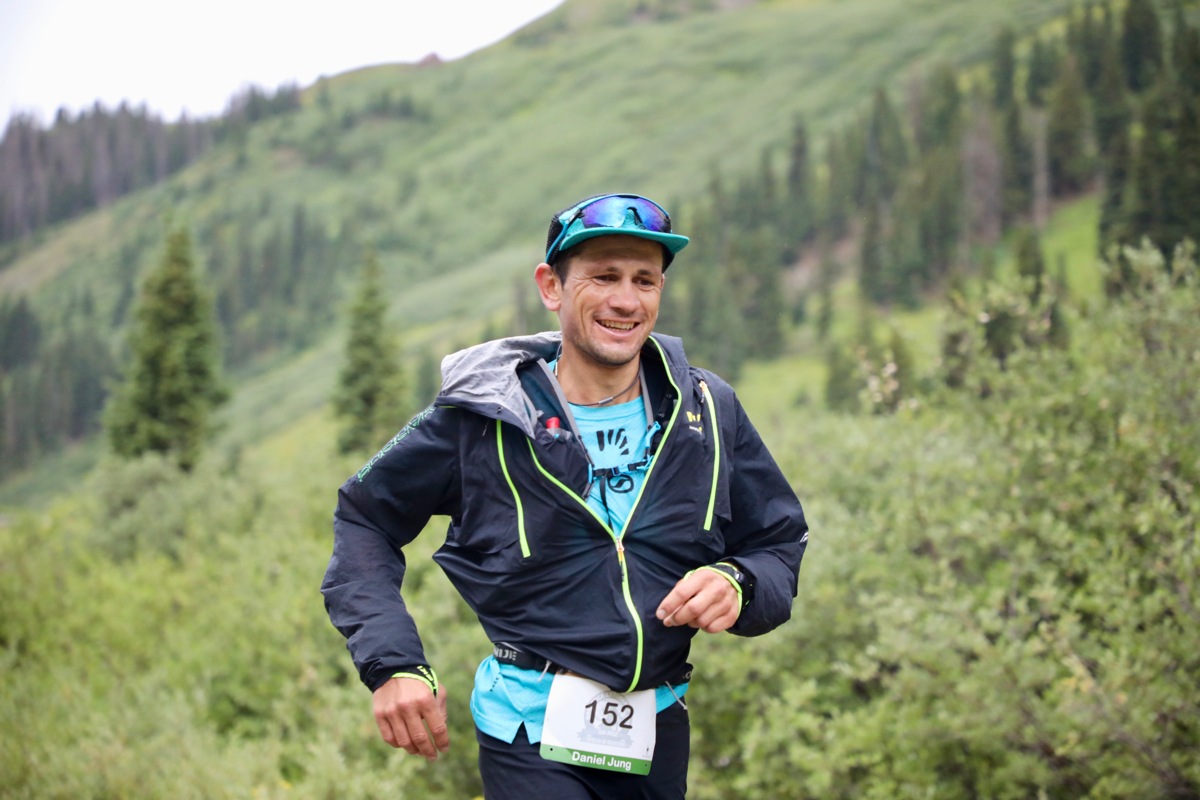
Dani Jung in the 2022 Hardrock 100. Jung maintained a sustainable pace for a strong fourth-place finish. Photo: iRunFar/Bryon Powell
Tip: Have a Metric for Sustainable, All-Day Race Effort
For many, the best metric is heart rate. It is most readily available — on wrist optical GPS running watches — and easiest to monitor. A close second is breath rate and quality. Whatever you choose, find — and hone — that sustainable pace over the vast majority of your training runs.
That doesn’t preclude speed or high-intensity training. But all racing — from five to 500 kilometers — demands race-pace specificity. Find and hone that effort over many miles and hours. Teach and reinforce that sustainable effort throughout your whole body — heart, muscles, nerves, and brain.
A failure to train and race sustainably often leads to blow-ups via bonking, gut issues, muscle cramping, and everything in between.
Lesson 2: Train for Time on Feet
Once you have determined a sustainable race pace, applying that pace over very long outings is a key to 100-miler success. This should not come as a surprise to even beginning ultrarunners. However, if you have slipped out of the routine of very long, all-day trail adventures, it is easy to overlook their importance.
These outings needn’t be even medium-high intensity. On the contrary, if 100-mile race-pace runs represent “workouts,” these outings represent the “long slow distance” of road marathon training. Putting numbers to it: if your heart-rate ceiling for race-pace runs is 150 beats per minute, then all-day adventure outings might average only 120 beats per minute. And I purposefully call them outings because, even at moderate altitudes, such bouts are frequently as much walking and hiking as they are, running — especially if hills and mountains are involved.
iRunFar’s Meghan Hicks — a multi-time top-10 Hardrock 100 finisher and former record holder of the Nolan’s 14 challenge — once told me that she goes on at least one 30-mile adventure outing per month so, as she put it, her body can remember how to go that far. And because she lives in the thinnest air of the San Juan Mountains of southwest Colorado, those hike up/run down outings are typically well over 12,000 feet and might take seven or eight hours.
Very long — but low-intensity — trail outings develop key capacities of both physiological — muscle, joint, and tissue loading — and psychological capacities. They train the body and brain to be out and upright for long periods of time. But because they are of low intensity, both mechanical and metabolic impacts are low, and recovery is relatively quick.
Tip: Engage in at Least One Easy, All-Day Outing per Month
But in focused 100-mile preparation, consider two per month, including at least one or two in the 40- to 50-mile range. Consider those longer runs and events, especially if you haven’t covered that distance in training or racing in the past one or two years.
Lesson 3: Be Able to Run 20 Miles or More Nonstop
Having entered the sport with peak marathon fitness, covering long distances on foot quite fast was an ability I took for granted. For nearly a decade, I had routinely covered over 20 miles without stopping. So, when I entered my first ultras, the concept of running much farther — but slower — seemed doable.
And while I lost that peak marathon race-pace speed, I routinely returned to the marathon distance, if for nothing more than a key fitness and ability metric.
This year, after several years of pain and limited training, running 20 miles nonstop actually seems formidable. While such a sentiment seems silly for an aspiring 100-mile finisher, most midpack runners are likely in the same situation. We are perhaps strong and tough enough to gut out a full 100 miles, but hardly able to run even the simple majority of it.
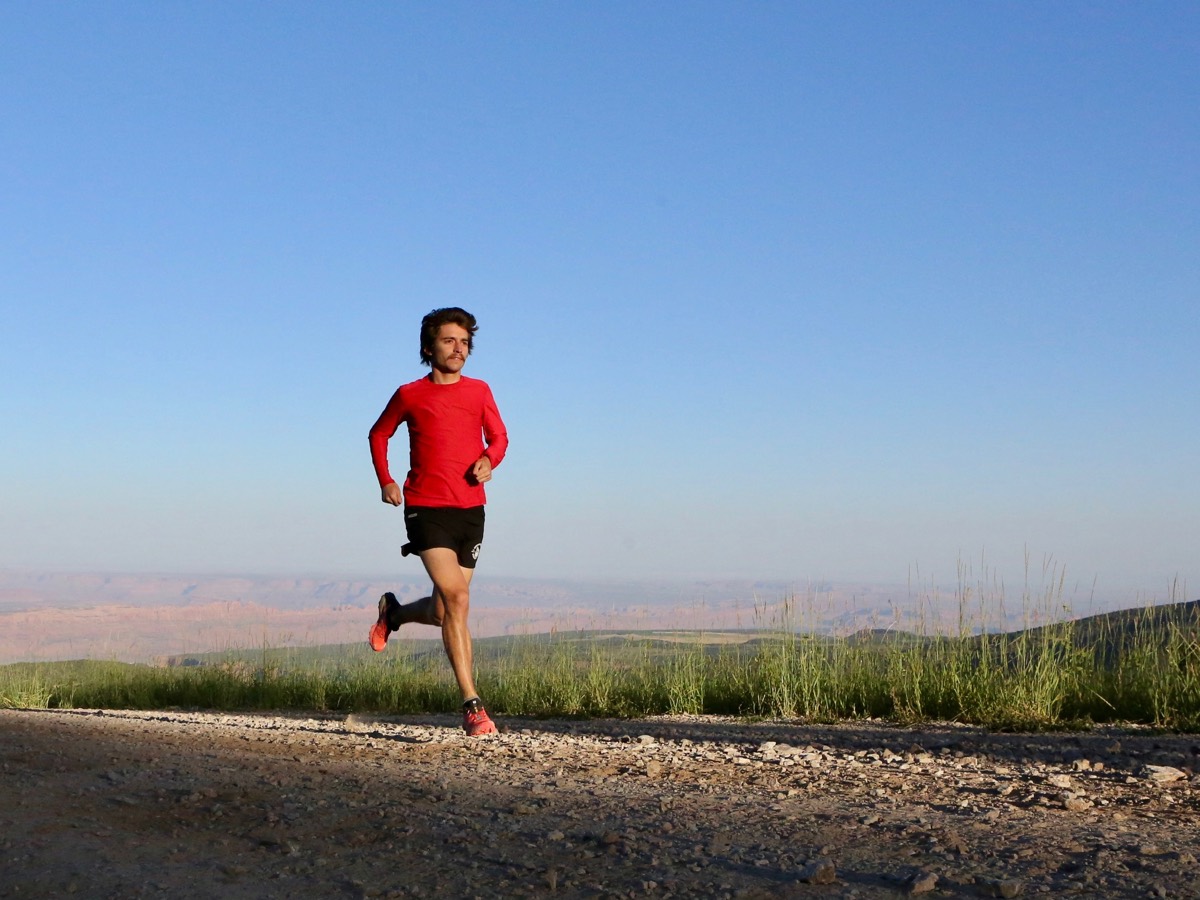
Flatter, less technical trails are good for practicing long continuous running. Photo: Human Kinetics/Kirsten Kortebein
In my crash-course preparations for the Run Rabbit Run 100 Mile, I had only one such run: 33 miles on the tail end of the Western States 100 course. The final 20 miles is quite runnable, with only two prolonged climbs. I ran nearly all of that loop, but it was a challenge!
Thus, when I arrived at the Run Rabbit Run 100 Mile, I was similarly challenged in ways far beyond my early 100 milers. While it’s high altitude and at times rugged, it has large swaths of very runnable terrain. Specifically, the miles from about 28 to 51 are either flat or downhill.
By the time I had arrived at mile 51, in downtown Steamboat Springs, I was tired of running! I wanted to walk. Not because I was necessarily tired, my effort was controlled and easy. But my legs were not prepared for that overall distance or … that many miles of actual running!
For many aspiring trail runners, the variety of terrain and topography is alluring — not having to repetitively run mile after mile. But in many races, alpine 100 milers like this one, or races like the Western States 100, known for its more technical high country and steep canyons — has prolonged flat sections that demand pure and continuous running!
I wasn’t prepared for that, and neither were most midpackers around me. After dropping out, I drove out the dirt road that made up miles 78 to 80 along the course, a flat or a gradual downhill ripe for fast miles. Yet, most runners I saw were walking. While their reasons were perhaps varied, for me, my capacity to simply continue running by that point had evaporated.
Tip: Train to Run 20 Miles Nonstop
On a runnable and forgiving course, test and train your ability to run nonstop over at least 20 miles. I cite the training and racing of Western States 100 icon Tim Twietmeyer. Besides his illustrious history at the Western States 100, which includes 25 sub-24-hour finishes, 15 top-10 finishes, and five wins, Tim is also known as an intense streaker where he runs the same races every year. Among them were the California International Marathon (CIM) in December and American River 50 Mile in April.
CIM is a flat-and-fast road marathon known to produce the most Olympic Trials Marathon qualifying marks. And the American River 50 Mile is known for starting off with a full marathon of mostly flat and road running before ceding to winding singletrack. Such race habits no doubt played a role in Tim’s ability to run relatively fast over the closing and highly runnable final 38 miles of the Western States 100, and was a key to his success.
Follow Tim’s lead and consider one or two flat events per year, or challenge yourself with a regular outing of 20-plus miles of continuous running every one to three months.
Lesson 4: Prepare With Enough Gear for Every Weather Situation
This is a cliché item, but it can’t be emphasized enough. Be prepared for every conceivable weather situation. One-hundred-mile mountain races are hard enough as it is. When inclement weather intervenes, it can push a tenuous situation over the edge.
My pacer had to drop out. That’s right. My pacer dropped out before I did, and it wasn’t because I was running too fast. He’d become slightly ill earlier in the run and when the temperatures dropped below freezing, and neither he nor I were moving fast enough to generate enough heat. When we arrived at the mile 75 aid station, he had a seat right next to a fire … and began to shiver uncontrollably. This was despite having a warm jacket and hat! His day was done.
I continued on, bedecked in a long-sleeve hoodie, two jackets, a hat, and gloves. Yet I almost didn’t make it a quarter mile out of that aid station because I, too, was shivering uncontrollably. Only through sheer will and the heat of anger did I move fast enough to eventually warm up. Yet, when I arrived at the next aid station and it began to downpour, I simply didn’t have the gear to continue. The weather, plus my ailing gut, plus my sensitive ankles, were too much to overcome.
Tip: Pack and/or Carry All Possible Weather Gear
This is a tough one to accept until crazy weather conditions have happened to you. I should have known: I ran the 2012 Western States 100 when it was rain, sleet, and snow for 30 miles — I kept a hat on until the bottom of Devil’s Thumb at almost halfway. While it eventually got hot later on, it was dangerously cold for the first third of the race. Hardly anyone was prepared. Knowing about high alpine mornings, I’d packed a jacket, hat, and gloves, and I was lucky for that.
For the Run Rabbit Run 100 Mile, the previous day was extremely hot, with highs in the mid-80s Fahrenheit. It never got very cold overnight. For this year’s event, a storm system, unforeseen in any weather forecast, hovered tortuously over the course and poured rain on the competitors several times during the race, including at the start, mid-race, middle of the night, and the mid-morning finish hours.
Though I thought I’d sufficiently prepared — packing a spare puffy coat and pants for the high-country drop bag — I lacked rainproof gear, and my basic warm layers were no match for a freezing rain. The difference between me finishing and driving back to town might have been a waterproof puffy coat.
While you don’t need several of everything, have or carry the highest-quality gear for all weather scenarios. This is especially true for high-alpine events, which can see both dangerously hot and cold, wet conditions numerous times in the course of a single day! This might include:
- Different types of footwear, including some that is either good for cold temperatures or muddy, slick conditions.
- Many types of running socks, both thick and thin, and either can also double as gloves.
- Waterproof layers, both insulated and shells. Larger shell jackets can go over hydration packs.
- Disposable emergency blankets. While they don’t seem like much, these foil-like sheets, often seen at marathon finishes and in emergency kits, can be both race- and life-savers.
- Spare lighting systems.
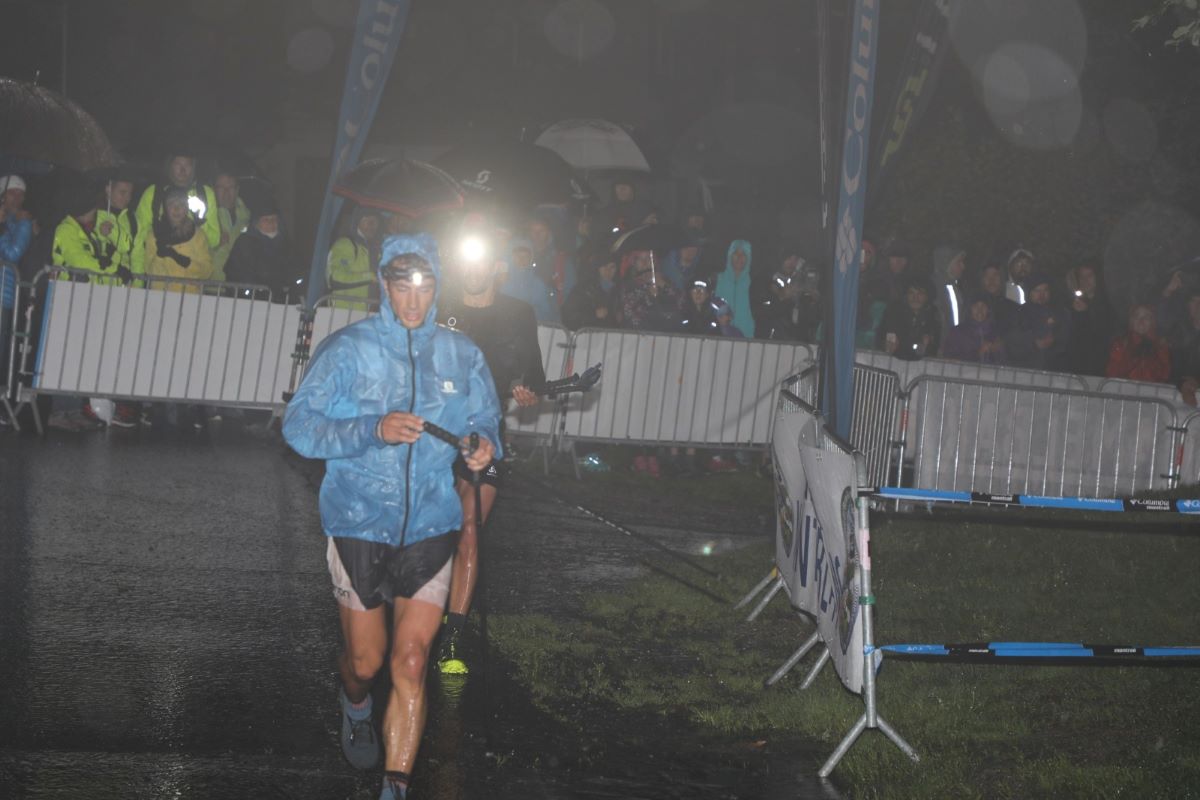
Kilian Jornet passing through a rainy Les Contamines at the 2018 UTMB. It’s often necessary to prepare for all the weather at a 100-mile race. Photo: iRunFar/Bryon Powell
Lesson 5: Practice Not Quitting
Ultramarathons are hard. One hundred milers are very hard. High-altitude mountain 100 milers are among the hardest. Struggle is inevitable. But what if you haven’t been in a real struggle in a long time?
Training often prepares us for those struggles. The art form of well-planned training applies just the right amount of pain and turmoil: enough to challenge us, but not too much to overwhelm.
Tip: Plan Some Contrived but Safe Suffer Experiences Into Your Training
One-hundred-mile-specific struggle training can be obtained from straining any of the metrics of distance, intensity, weather, and terrain. Any situation where you can safely get to the point where you truly wish to quit — but do not — is successful suffer training. This could come during the flat-and-fast 20 miler, when quitting might mean stopping to walk. Or from the all-day outings where it could be easy to cut short the big loop by taking a cutoff trail. Safely and successfully pushing onward proves to the brain and body that you can, indeed, continue, which is a key skill for race day.
But again, the art form is how to push the brain and body without overdoing it. We don’t want to drain ourselves too much for the upcoming goal event or put ourselves in harm’s way. There’s a fine line between fun suffering and just plain dangerous. Tread carefully!
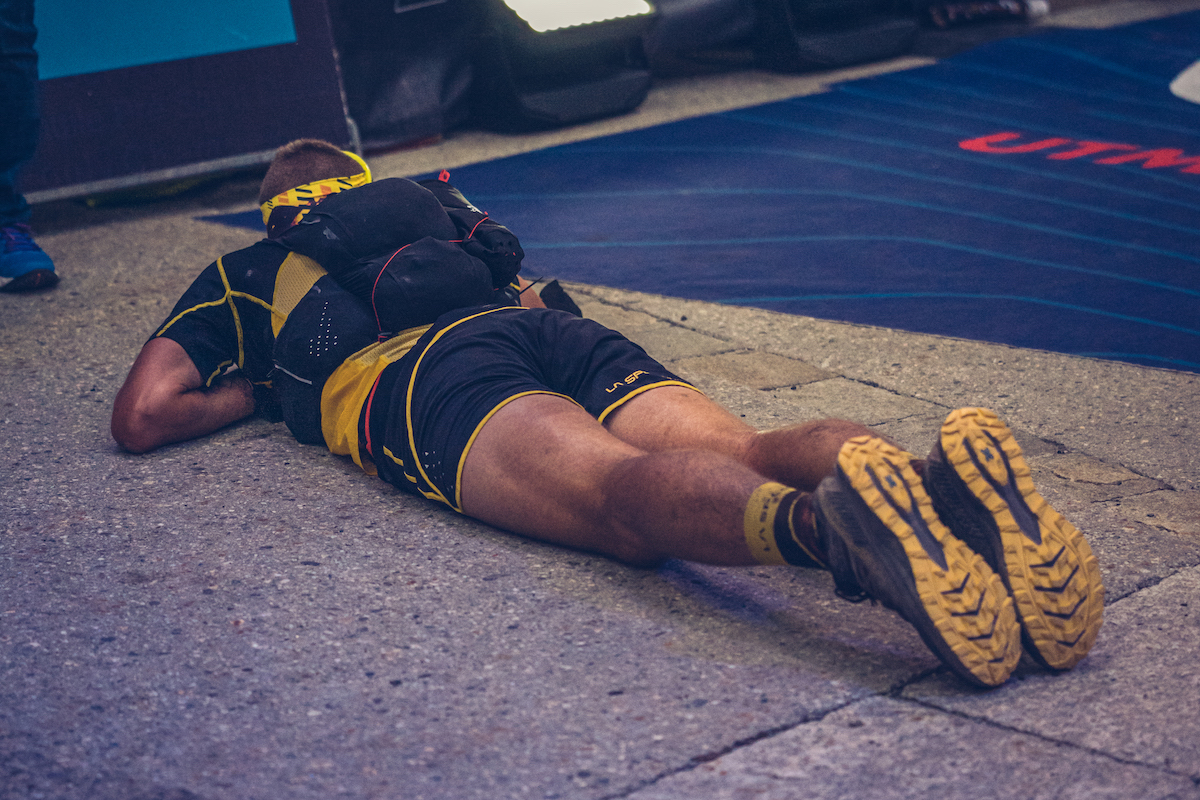
An exhausted runner at the finish line of the 2021 UTMB. Lying face down on the course is best avoided during the race, but once the finish line has been crossed all bets are off. Photo: Jean-Baptiste Joly
Final Thoughts
Indeed, it may be that 100-mile racing is best adopted as a lifestyle: a routine of long adventures, long continuous runs, and regular doses of beautiful suffering. But when you’re short on time, fitness, and verve for the 100-mile lifestyle and still want your best day from start to finish, the above list is a great strategy for covering the important bases.
Call for Comments
- Have you implemented any of these tips into your 100-mile preparations and racing?
- Have you any other good tips to add?

